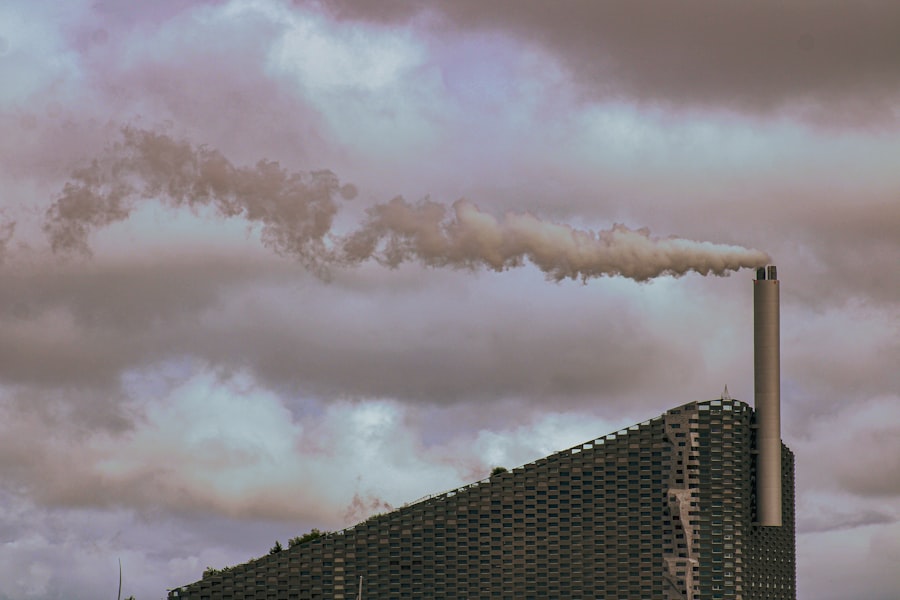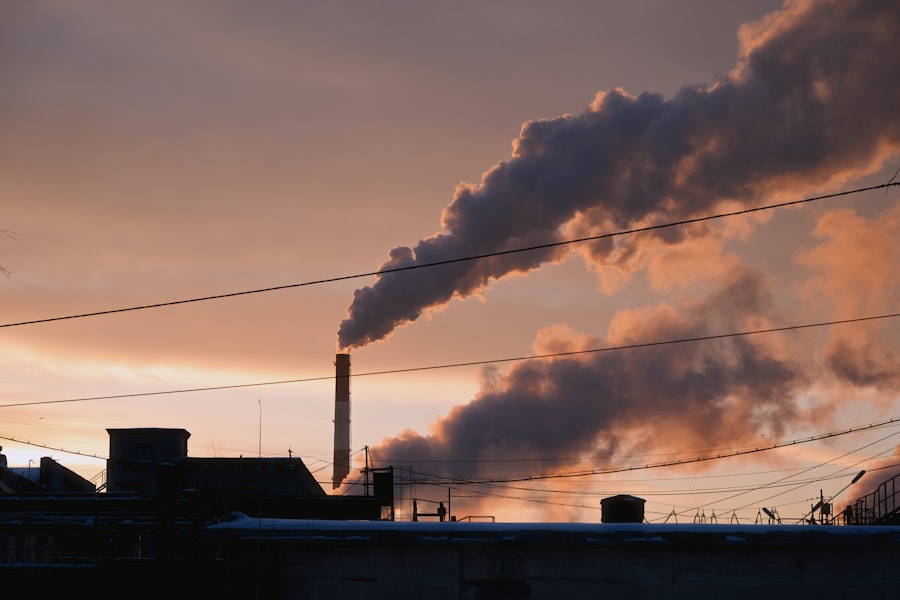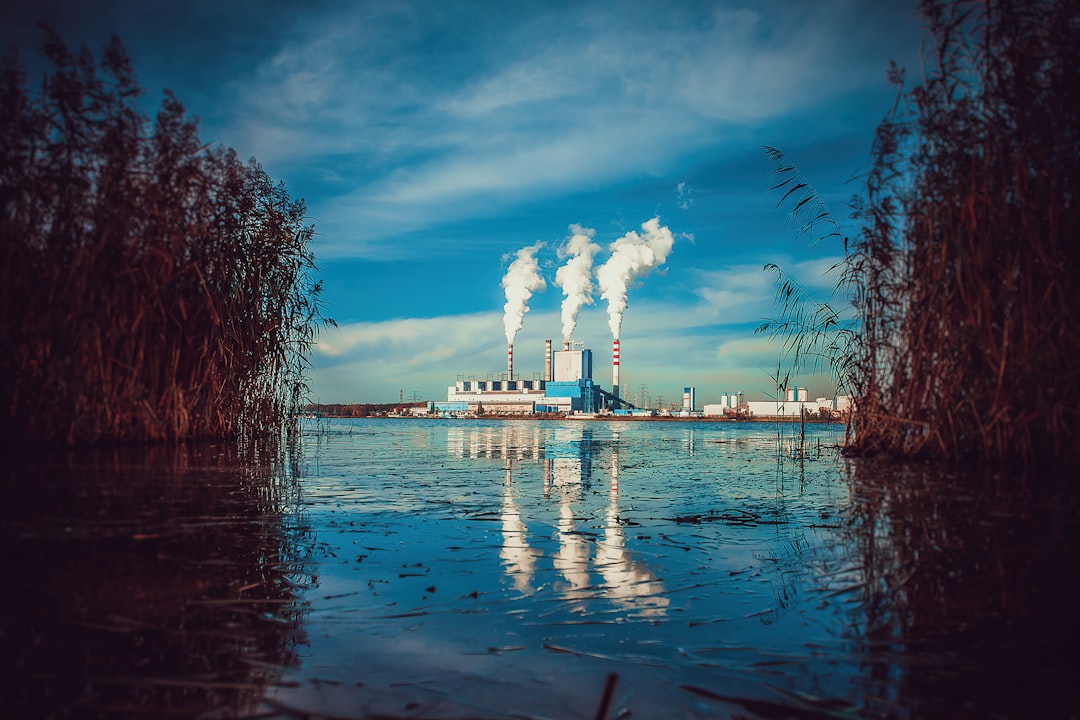Greenland, the world’s largest island, is a land of stark beauty and profound ecological significance. As you delve into its vast landscapes, you may find yourself captivated by the majestic glaciers, sprawling tundras, and unique wildlife. However, beneath this enchanting exterior lies a pressing concern: environmental liability.
This term encompasses the responsibilities and potential consequences associated with environmental degradation, particularly in a region as sensitive as the Arctic. The delicate balance of Greenland’s ecosystem is increasingly threatened by human activities and climate change, raising questions about accountability and the future of this pristine environment. As you explore the implications of environmental liability in Greenland, it becomes clear that the stakes are high.
The island’s unique geography and climate make it a barometer for global environmental changes. The melting ice sheets, rising sea levels, and shifting ecosystems are not just local issues; they resonate on a global scale. Understanding the complexities of these challenges is essential for anyone interested in the future of our planet.
The responsibility to protect Greenland’s environment is not solely in the hands of its inhabitants but extends to the international community, making it a shared concern that demands urgent attention.
Key Takeaways
- Greenland faces significant environmental liability due to its fragile ecosystem and the impact of climate change.
- The Arctic ecosystem is particularly vulnerable to climate change, with melting ice and rising temperatures affecting wildlife and biodiversity.
- Industrial development in Greenland has had negative effects on the environment, including pollution and habitat destruction.
- Protecting Greenland’s wildlife and biodiversity is crucial for maintaining the delicate balance of the Arctic ecosystem.
- Indigenous communities play a vital role in environmental protection and sustainable development in Greenland.
The Fragile Ecosystem of the Arctic
The Arctic ecosystem is one of the most fragile on Earth, characterized by its extreme conditions and unique biodiversity. As you venture into this region, you will encounter a variety of species that have adapted to survive in harsh climates, from polar bears and seals to migratory birds and resilient plant life. Each organism plays a crucial role in maintaining the ecological balance, and any disruption can have cascading effects throughout the food web.
The interconnectedness of these species highlights the importance of preserving their habitats, which are increasingly under threat from both natural and anthropogenic factors. In Greenland, the fragility of the Arctic ecosystem is particularly evident. The island’s vast ice sheets serve as critical habitats for many species while also acting as indicators of climate health.
As temperatures rise and ice melts at an alarming rate, you may witness firsthand how these changes impact not only wildlife but also local communities that rely on these resources for their livelihoods. The loss of biodiversity and habitat degradation are pressing concerns that require immediate action to ensure the survival of both the ecosystem and the people who depend on it.
The Impact of Climate Change on Greenland

Climate change is perhaps the most significant threat facing Greenland today. As you observe the dramatic changes in weather patterns and temperatures, it becomes clear that this phenomenon is not just a distant concern; it is a reality that is reshaping the landscape before your eyes. The island has experienced some of the fastest warming rates on the planet, leading to accelerated ice melt and rising sea levels.
This transformation poses risks not only to Greenland’s environment but also to global coastal communities. The consequences of climate change extend beyond melting ice. You may notice shifts in wildlife migration patterns, altered growing seasons for vegetation, and increased frequency of extreme weather events.
These changes disrupt traditional ways of life for Indigenous communities and threaten food security as marine and terrestrial ecosystems become less predictable. The urgency to address climate change in Greenland cannot be overstated; it requires immediate action from local governments, international organizations, and individuals alike to mitigate its effects and adapt to new realities.
Industrial Development and Its Effects on the Environment
| Metrics | Data |
|---|---|
| CO2 Emissions | 10,000 tons per year |
| Water Pollution | 20% increase in polluted water bodies |
| Deforestation | 50,000 acres lost annually |
| Waste Generation | 100,000 tons of industrial waste per year |
As Greenland grapples with climate change, industrial development presents both opportunities and challenges. The island is rich in natural resources, including minerals and oil reserves, which have attracted interest from various industries seeking to exploit these assets. While economic development can bring much-needed revenue and job creation, it also raises significant environmental concerns.
As you consider the implications of industrial activities, you may find yourself weighing the benefits against the potential harm to Greenland’s fragile ecosystems. The extraction processes associated with mining and oil drilling can lead to habitat destruction, pollution, and increased greenhouse gas emissions. You might witness firsthand how these activities disrupt local wildlife and contribute to climate change, creating a paradox where economic growth undermines environmental sustainability.
Striking a balance between development and conservation is crucial for ensuring that Greenland’s natural beauty and ecological integrity are preserved for future generations.
Protecting Greenland’s Wildlife and Biodiversity
The protection of wildlife and biodiversity in Greenland is paramount for maintaining ecological balance and ensuring the health of ecosystems. As you explore this stunning landscape, you may encounter various species that are emblematic of the Arctic environment. From iconic polar bears to migratory birds that traverse vast distances, each species plays a vital role in its habitat.
However, these animals face numerous threats from climate change, habitat loss, and human activities. Conservation efforts are essential to safeguard Greenland’s unique wildlife. You may learn about initiatives aimed at protecting critical habitats, such as marine protected areas that provide safe havens for marine life.
Additionally, community-led conservation programs often involve local knowledge and practices that have been passed down through generations. By engaging with Indigenous communities and fostering a sense of stewardship, you can appreciate how collaborative efforts can lead to more effective conservation strategies that benefit both people and nature.
The Role of Indigenous Communities in Environmental Protection

Indigenous communities in Greenland hold invaluable knowledge about their environment, having lived in harmony with nature for thousands of years. As you engage with these communities, you will discover their deep connection to the land and their commitment to preserving its integrity. Their traditional ecological knowledge offers insights into sustainable practices that can inform modern conservation efforts.
This shift acknowledges their rights and expertise while promoting collaborative approaches to environmental stewardship.
By supporting Indigenous-led initiatives, you contribute to a more inclusive framework for addressing environmental challenges in Greenland—one that honors traditional wisdom while embracing innovative solutions for a sustainable future.
Strategies for Sustainable Development in Greenland
Sustainable development in Greenland requires a multifaceted approach that balances economic growth with environmental protection. As you explore potential strategies, you may encounter various initiatives aimed at promoting sustainability across different sectors. For instance, investing in renewable energy sources such as wind and solar power can reduce reliance on fossil fuels while creating jobs in emerging industries.
This transition not only benefits the environment but also enhances energy security for local communities. Moreover, sustainable tourism presents an opportunity for economic development while preserving Greenland’s natural beauty. By promoting responsible travel practices that prioritize conservation and cultural respect, you can help ensure that visitors leave with a deeper appreciation for the environment rather than contributing to its degradation.
Engaging local communities in tourism initiatives fosters economic resilience while empowering them to share their stories and traditions with visitors.
International Cooperation for Arctic Environmental Protection
The challenges facing Greenland’s environment extend beyond its borders; they are part of a larger narrative concerning Arctic environmental protection. As you consider the importance of international cooperation, it becomes evident that collaborative efforts are essential for addressing transboundary issues such as climate change, pollution, and biodiversity loss. Countries within the Arctic region must work together to develop policies that prioritize environmental sustainability while respecting Indigenous rights.
You may learn about various international agreements aimed at protecting Arctic ecosystems, such as the Arctic Council’s initiatives focused on sustainable development and environmental protection. These frameworks facilitate dialogue among nations while fostering partnerships between governments, NGOs, and Indigenous communities. By participating in these collaborative efforts, you contribute to a collective response that recognizes the interconnectedness of Arctic environments and emphasizes shared responsibility for their preservation.
The Importance of Renewable Energy in Greenland
Transitioning to renewable energy sources is crucial for reducing greenhouse gas emissions and mitigating climate change impacts in Greenland. As you explore this topic further, you will discover how harnessing wind, solar, and hydropower can provide sustainable energy solutions while minimizing environmental harm. Investing in renewable energy infrastructure not only supports local economies but also enhances energy independence by reducing reliance on imported fossil fuels.
You may find that renewable energy projects often involve community engagement and participation, ensuring that local voices are heard in decision-making processes. By prioritizing renewable energy development, Greenland can set an example for other regions facing similar challenges while contributing to global efforts to combat climate change. This shift towards sustainability represents an opportunity for innovation and resilience in an ever-changing world.
Addressing Pollution and Waste Management in Greenland
Pollution poses significant threats to both human health and the environment in Greenland. As you navigate through discussions about waste management practices, it becomes clear that addressing pollution requires comprehensive strategies tailored to local contexts. You may learn about initiatives aimed at reducing plastic waste, improving recycling programs, and promoting responsible consumption habits among residents and visitors alike.
Effective waste management systems are essential for minimizing environmental impacts while safeguarding public health. By investing in infrastructure that supports recycling and waste reduction efforts, Greenland can create cleaner communities while fostering a culture of sustainability. Engaging local populations in these initiatives ensures that solutions are culturally relevant and widely accepted—an essential component for long-term success.
Future Challenges and Opportunities for Environmental Protection in Greenland
Looking ahead, Greenland faces numerous challenges related to environmental protection amid ongoing climate change pressures and industrial development interests. As you contemplate these issues, it becomes evident that proactive measures are necessary to safeguard this unique ecosystem for future generations. Balancing economic growth with ecological integrity will require innovative thinking, collaboration among stakeholders, and a commitment to sustainability at all levels.
However, within these challenges lie opportunities for positive change. By embracing renewable energy technologies, fostering sustainable tourism practices, and prioritizing conservation efforts led by Indigenous communities, Greenland can chart a path toward resilience amid uncertainty. Your engagement with these issues can contribute to a broader movement advocating for environmental justice—one that recognizes the interconnectedness of people and nature while striving for a sustainable future where both thrive harmoniously together.
In conclusion, as you reflect on your journey through Greenland’s environmental landscape, it becomes clear that protecting this remarkable region requires collective action from individuals, communities, governments, and international organizations alike. The responsibility lies not only with those who inhabit this land but also with all who share an interest in preserving our planet’s fragile ecosystems for generations to come.
In recent years, Greenland has become a focal point in discussions about environmental liability due to its rapidly changing landscape and the implications of climate change. An insightful article that delves into the complexities of Greenland’s environmental challenges can be found on Hey Did You Know This. This article explores the intricate balance between economic development and environmental preservation in Greenland, highlighting the urgent need for sustainable practices. For more detailed information, you can read the full article by visiting Hey Did You Know This.
WATCH THIS! Greenland’s Ice Is Hiding A Nuclear Time Bomb
FAQs
What is environmental liability in Greenland?
Environmental liability in Greenland refers to the legal responsibility for environmental damage or pollution caused by human activities. This can include damage to land, water, and wildlife, as well as the costs associated with cleaning up and restoring the affected areas.
What laws and regulations govern environmental liability in Greenland?
Environmental liability in Greenland is governed by the Environmental Protection Act, which outlines the legal framework for preventing and addressing environmental damage. Additionally, Greenland is also subject to international agreements and conventions related to environmental protection and liability.
Who is responsible for environmental liability in Greenland?
In Greenland, the responsibility for environmental liability lies with the party or parties responsible for causing the environmental damage or pollution. This can include individuals, companies, or government entities that are found to be at fault for the environmental harm.
What are the consequences of environmental liability in Greenland?
The consequences of environmental liability in Greenland can include financial penalties, legal action, and the requirement to clean up and restore the affected areas. Additionally, those found responsible for environmental damage may also be required to implement measures to prevent future harm.
How is environmental liability enforced in Greenland?
Environmental liability in Greenland is enforced through legal and regulatory mechanisms, including inspections, monitoring, and enforcement actions by government authorities. Those found to be in violation of environmental laws and regulations may be subject to penalties and other enforcement measures.
